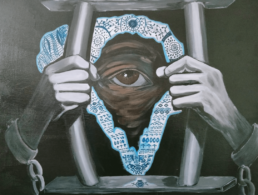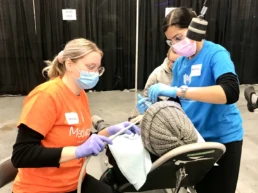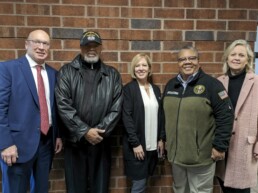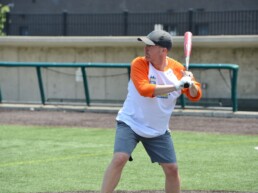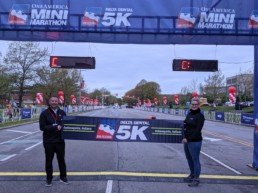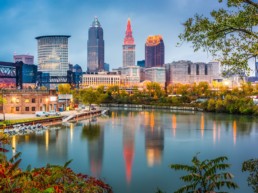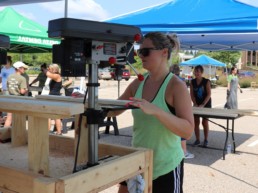Local artists honor Dr. King’s legacy
For the fourth year, the Dr. Martin Luther King Jr. Commission of Mid Michigan Art Contest launched with support from Delta Dental of Michigan and the MSU Broad Art Lab.
The contest was an opportunity for local artists to showcase their talents while honoring the legacy of Dr. Martin Luther King Jr.
“The arts have a unique ability to frame our world in ways that bring people together and cause them to think differently about our world,” said Elaine Hardy, chairperson of the commission. “We believe this art contest provides context for people to help promote the legacy of Dr. Martin Luther King.”
Local artists of middle school age and up submitted works of art using mediums ranging from acrylic paint to pencil and charcoal.
Artists were tasked with curating a piece to accompany the theme, “In the long run, justice finally must spring from a new moral climate” and include a 250-word narrative explaining their piece’s relation to social injustice and inequity.
Winners this year were: Sophia Gray of Haslett who attends St. Martha School, Kaitlyn Silengo of Lansing who attends Holt High School and Karla Forrest-Hewitt of East Lansing. See their entries below.
“Red Roses” by Sophia Gray
My art can be seen from many different lights,but my portrayal of it expresses the moral high ground of today. I love working with texture in my work, and that shows. The main idea of it is to be people crawling out of the frame. Essentially clawing their way out of their situation or themselves. The skeletons revealed on the hands are supposed to express how much time passes before people reach or never reach justice. We want to forget the pain and fear but we can’t forget how much it hurts. Those red flowers (memories)taint us and those never leave unlike the real ones, they never wilt. We all have those same burning red flowers. And “in the long run” we will eventually crawl out of that frame, the flowers will still be there, but at least we’ll be free. No world at least this one will ever be at perfect peace but at least we would have the moral climate that keeps some of us human. The faces are supposed to look tired, because we all are, of everything including ourselves and the people around us. The mask added a touch of the current pandemic to the art. I hope you enjoyed reading and looking at my piece. I took a while on it so I hope you did.
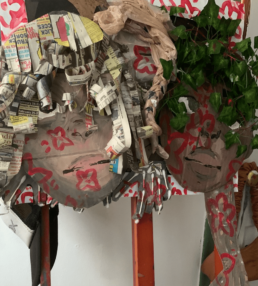
“When Can I Fly?” by Kaitlyn Silengo
Dr. Martin Luther King, Jr. Justice for everyone regardless of age, race, sex, or orientation is something that Dr. Martin Luther King, Jr strived for. Equality for all is still far from our reality, but it is not impossible. The three most prevalent social injustices today are ageism, racism, and homophobia. I felt compelled to represent the discrimination and struggles LGBTQIA+ people face. Butterflies are a symbol of happiness, so I wanted to use them to represent sexual orientation. The rainbow butterflies represent LGBTQIA+, and the white butterflies represent what society deems acceptable, heteronormative. In the drawing, the person is protectively holding a jar of their rainbow butterflies because they feel like they must hide them. To be accepted, the person is emitting white butterflies, and is instead keeping their real butterflies their happiness- unable to fly freely. By trading happiness for safety, it can cause great turmoil. This relates to the theme of social injustice and inequality because many LGBTQIA+ people can not live freely or without fear. Adolescence who are LGBTQIA+ are more likely to experience homelessness, suicidal ideation, or attempt suicide because of their identity. Many people cannot be themselves because they will be reprimanded, lose companions, and become targets for hate crimes. Discrimination against LGBTQIA+ people continues today as shown in Floridas’ new bill “Don’t Say Gay”. My hope is that someday, everyone’s butterflies can fly freely no matter what color they are.
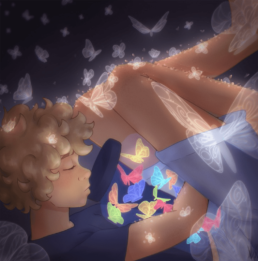
“Bending the Bars” by Karla Forrest-Hewitt
LaTosha Brown asked a question that challenged my thinking. “What would America look like without racism?” Was I allowed to envision such a place? It is not a space that can be created without discomfort. But there it is, the new moral climate that justice must spring from. If we are to stop the harm and unjust incarceration to brown bodies. We must keep our eyes open and not forget where have been and not let it hold us back. I envision an America where we are continuously striving for equity and are never satisfied with maintaining the status quo, but in lifting every man and woman. The image of shackled hands bending bars is symbolic of how we must change systemic racism and the policies that are still in effect today. The eye looking through the symbolic diagram of Africa, references African ancestry. The designs are symbolic of African fabric designs that tell beautiful stories.
